Brest State Technical University, Course "Contemporary Intelligent Information Technology (CIIT)"
From students' works (2016-fall)
 All One Problem
All One Problem
 Start with a population of random 100 binary chromosomes each with 1000 genes,
Start with a population of random 100 binary chromosomes each with 1000 genes,
that is,
each chromosome is made up of
an average of 500 genes "1" and 500 genes "0"
Let's evolve the population with
truncate-selection
and
one-point-crossover!
An example of result ... By Yury Yuryn (7 September 2016)
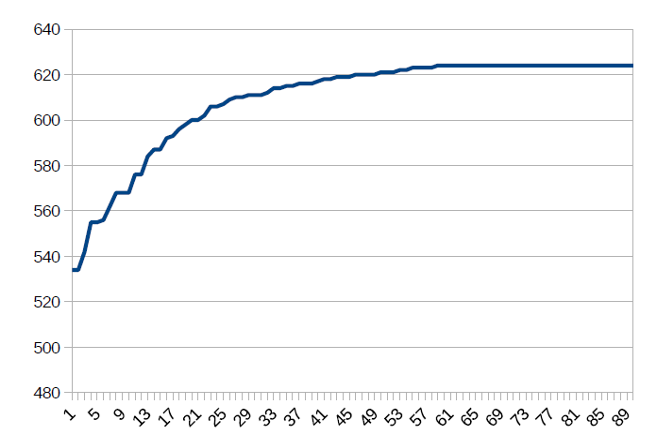
 1000 genes seem to be too big to converge to all one chromosome!
1000 genes seem to be too big to converge to all one chromosome!
 What if, then, we use a,
mutation
with a probability, say, 0,001 (average of one gene of every chromosome will be mutated)
What if, then, we use a,
mutation
with a probability, say, 0,001 (average of one gene of every chromosome will be mutated)
An example of result ... By Igor Kondrashuk (08 September)
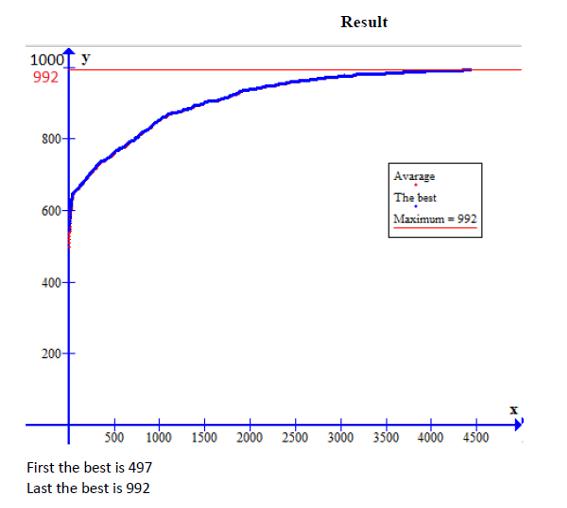
 Mutation seemed to work and an almost all one chromosomes were reached finally!!
Mutation seemed to work and an almost all one chromosomes were reached finally!!
 Next we try
roullett (fitness propotionet) selection instead of truncate selection
Next we try
roullett (fitness propotionet) selection instead of truncate selection
An example of result ... By Artyom Drapezo (14 September)
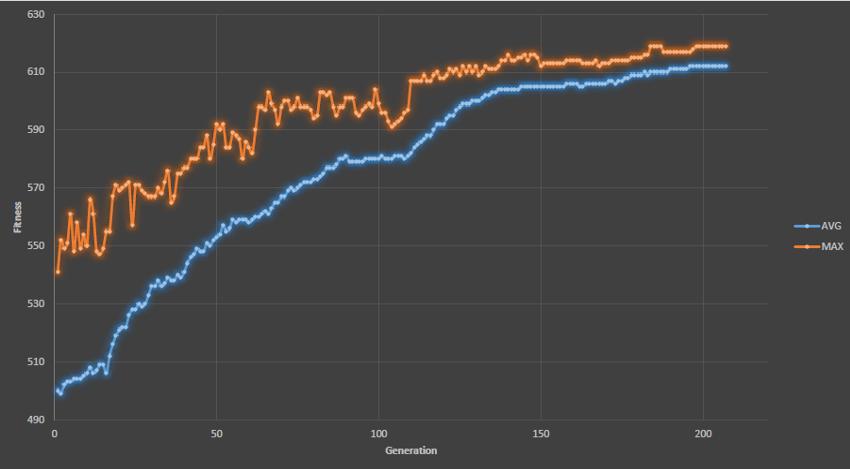
 Like trancate selection, roulette selection works but seems not very efficient, either!
Like trancate selection, roulette selection works but seems not very efficient, either!
Then we are curious about how often each chromosome is selected, because selection provability is proportional to fitnesas.
Now we have 100 chromosomes, the table is somewhat too big to show all. So imagine from part of the table.
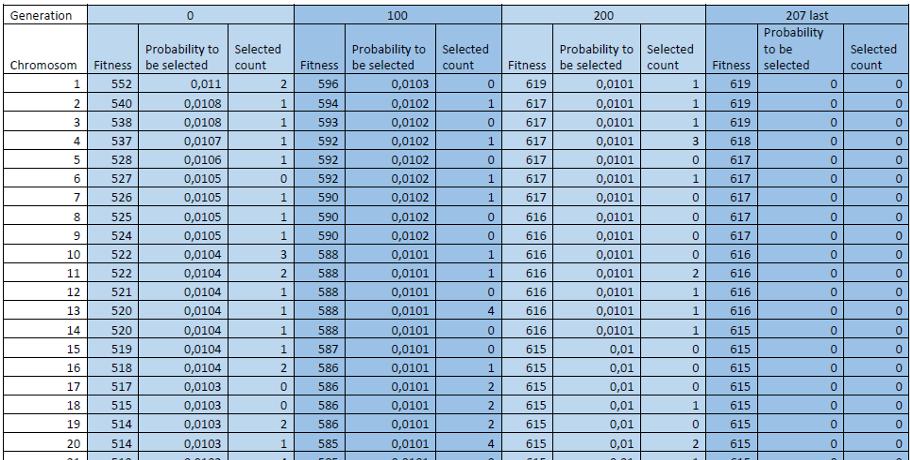


 We are also curious about how
uniform crossover works by comparison with one-point crossover
We are also curious about how
uniform crossover works by comparison with one-point crossover
An example of comparison
roulette selection + uniform crossover
vs. trancate selection +uniform crossover ... By Aleksandr Matweychuk (29 September)
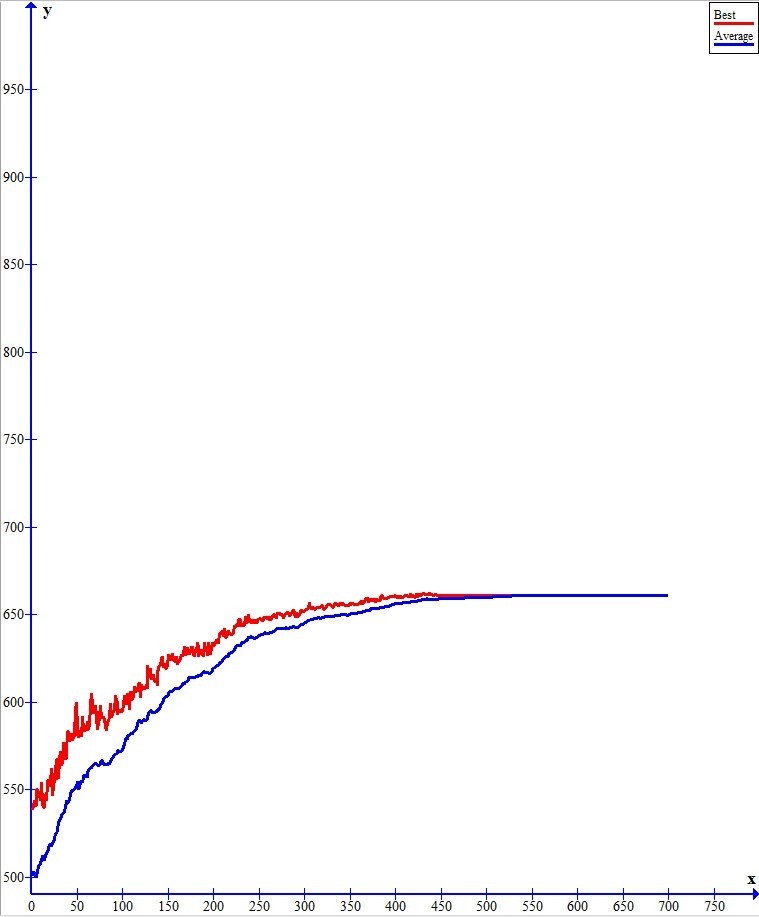
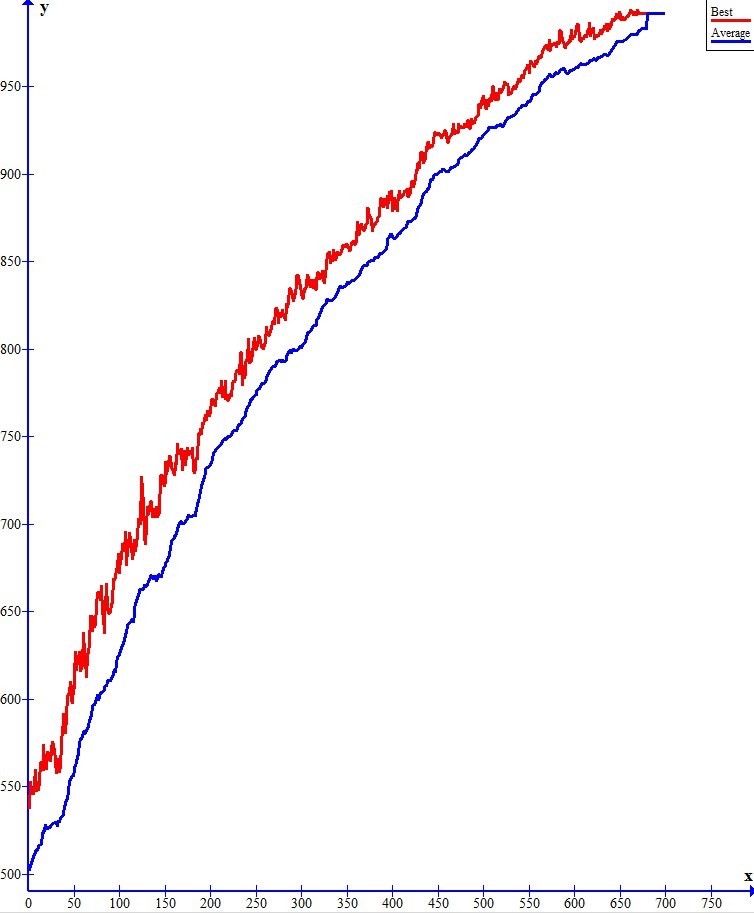
 Function Optimization
Function Optimization
 20-D Rastrigin function
20-D Rastrigin function
y = 20 + ((x_1)^2 - cos(2*pi*(x_1))) + ... + ((x_20)^2 - cos(2*pi*(x_20)))
An example of result ... By Alexey Golodko (22 September)

 2-D Griewank function
2-D Griewank function
y = 3 + x^2 + 3*cos(2*pi*x)
An example of result ... By Roman Bursevich (22 September)
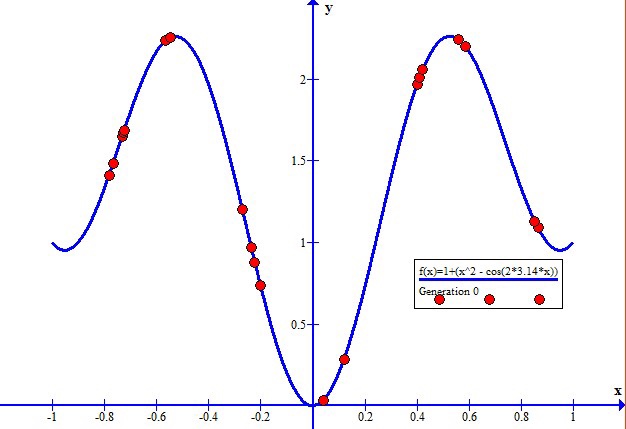
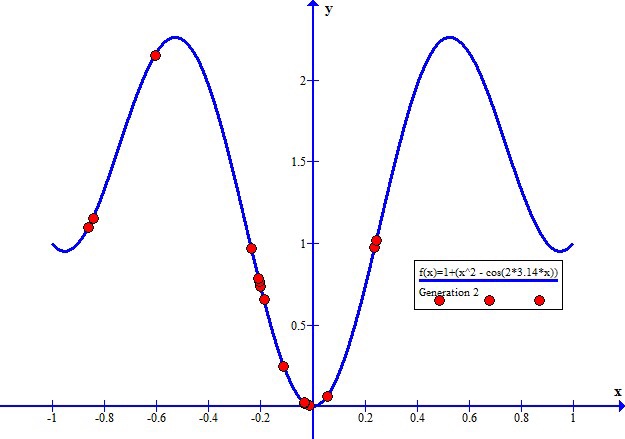
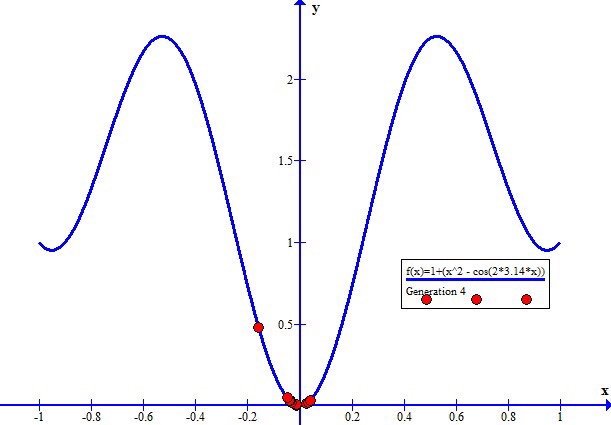
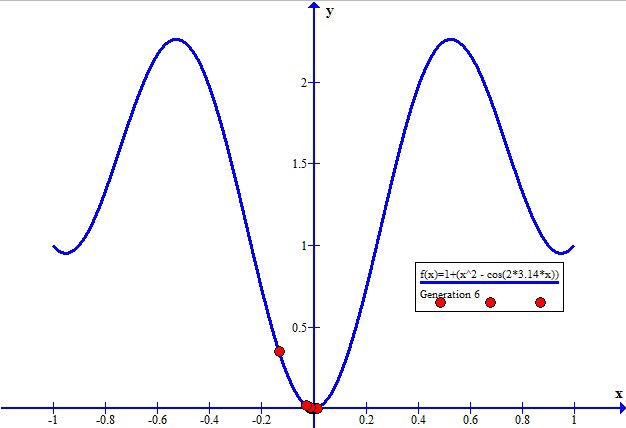
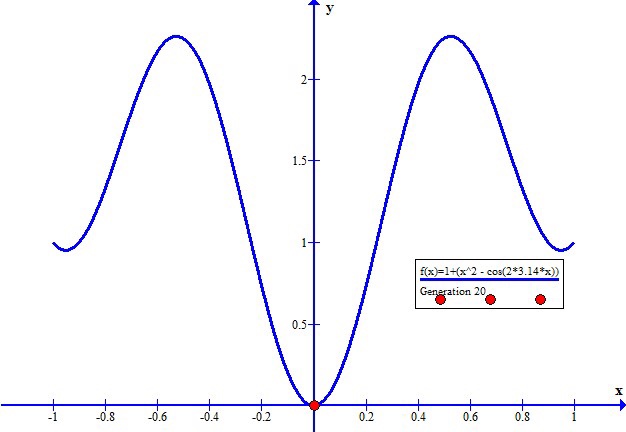
 3-D Schwefel function
3-D Schwefel function
z = x*sin(|x|) + y*sin(|y|)
An example of result ... By Denis Ramskiy (29 September 2016)
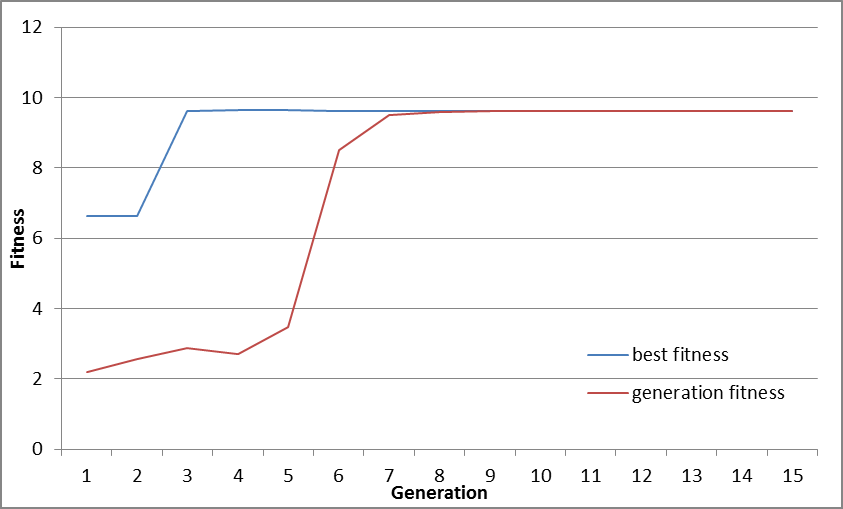
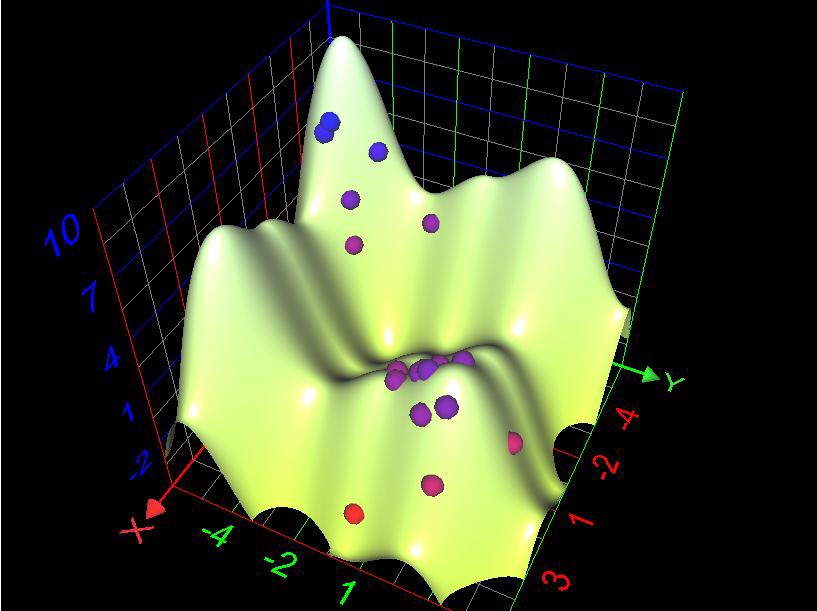

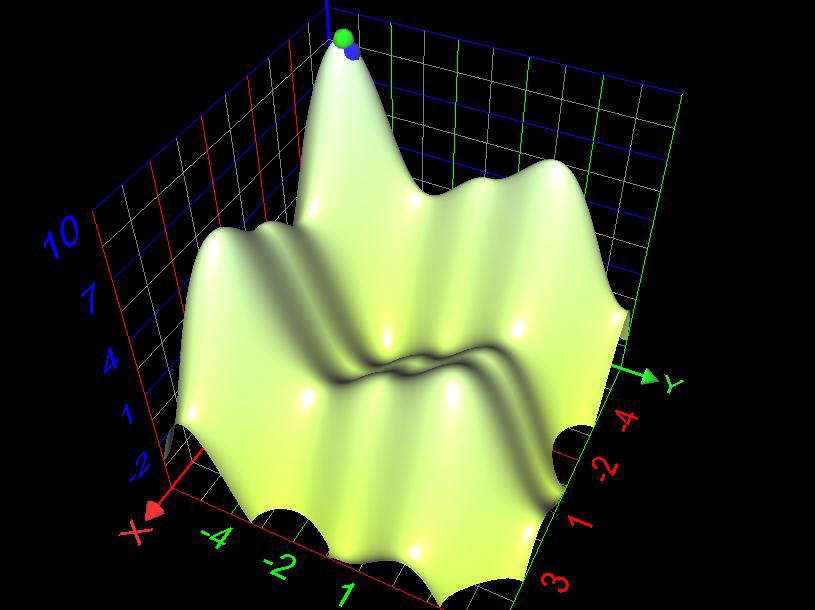


 Lucky Dog
Lucky Dog
 Lucky dog problem in gridworld (0,0)-(1000,1000) with dog house at (500,500) and sausage at (800,800)
Lucky dog problem in gridworld (0,0)-(1000,1000) with dog house at (500,500) and sausage at (800,800)
 Traveling Salesperson Problem (TSP)
Traveling Salesperson Problem (TSP)
 E.g. TSP with 20 cities
E.g. TSP with 20 cities

 Maximization of 3-D Schwefel function z=x*sin(|x|+y*sin(|y|) with 20 chromosomes of 10 binary genes
Maximization of 3-D Schwefel function z=x*sin(|x|+y*sin(|y|) with 20 chromosomes of 10 binary genes
 An example ... By Golovchik Vladislav
An example ... By Golovchik Vladislav
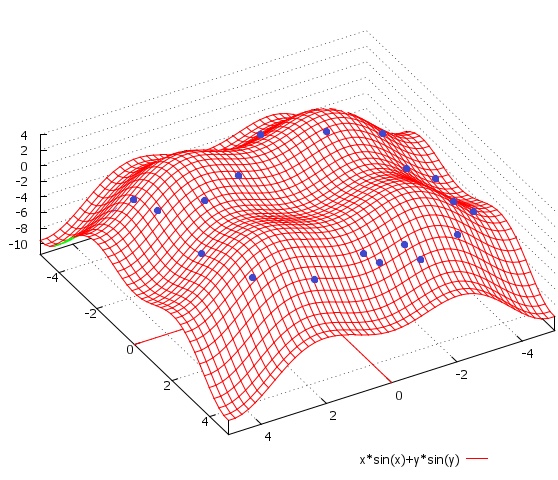
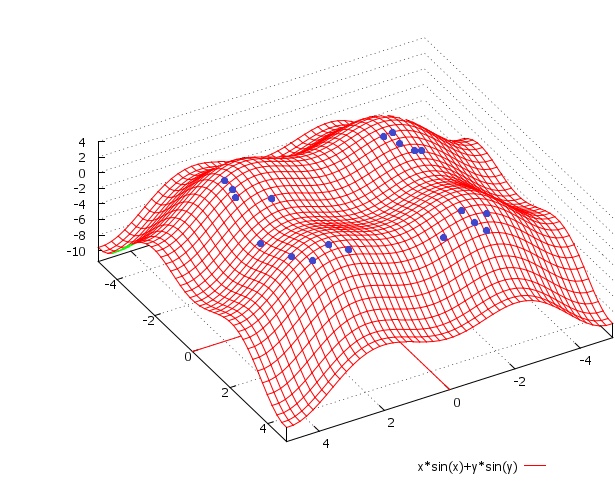
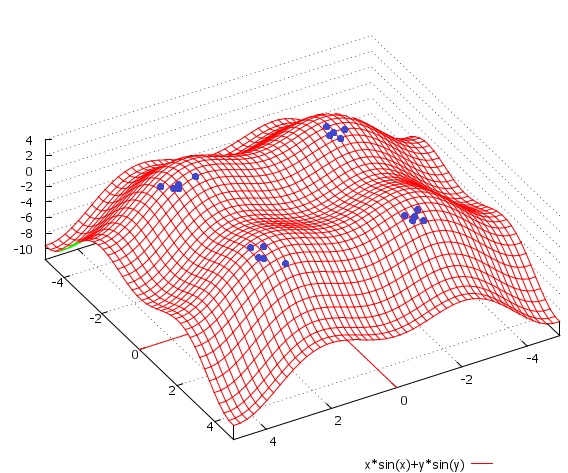
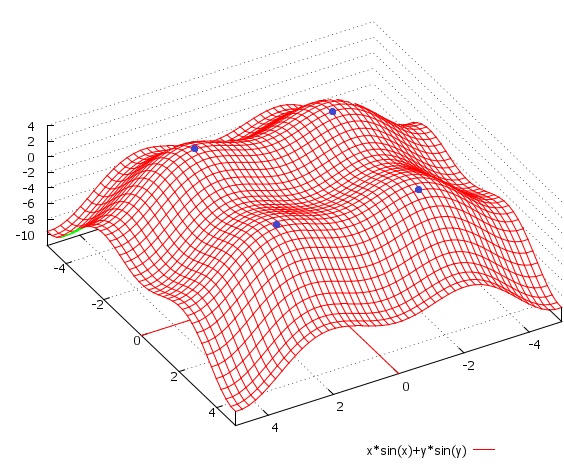
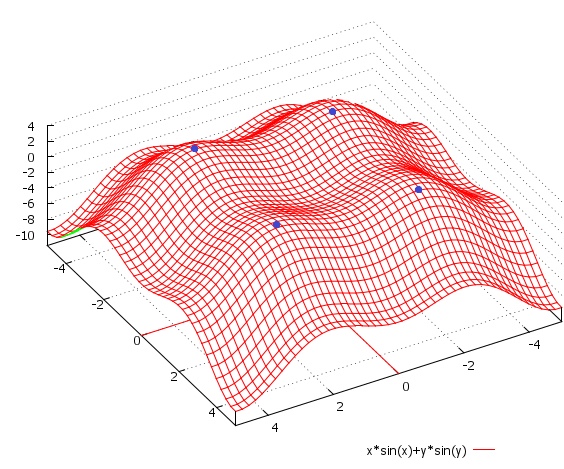
 An example ... By Rachkovskaya Polina
An example ... By Rachkovskaya Polina
























